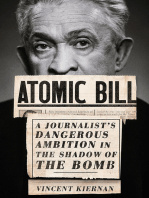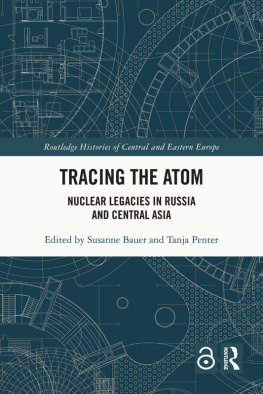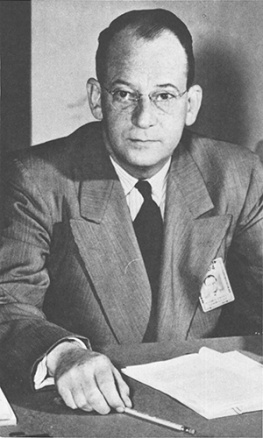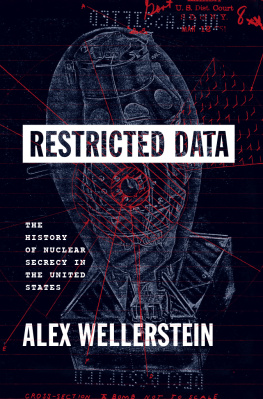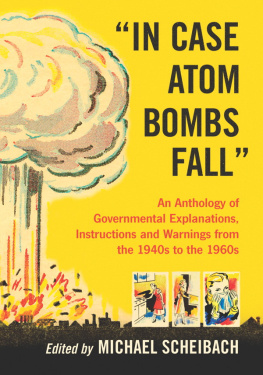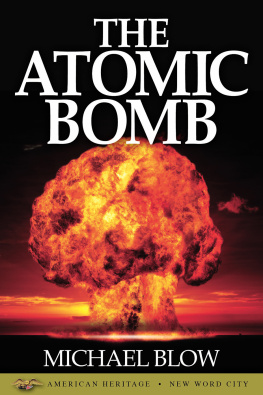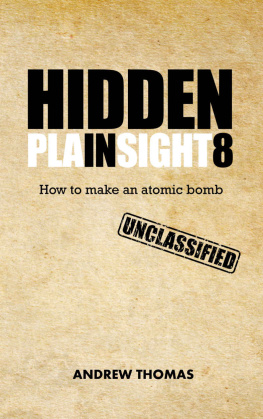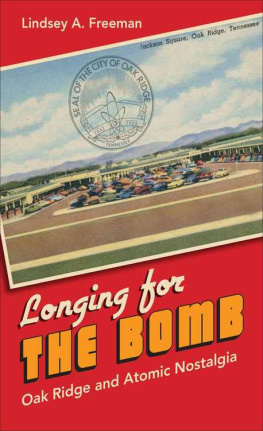(p.ii) 
A SERIES IN THE HISTORY OF CHEMISTRY, BROADY CONSTRUED, EDITED BY Angela N. H. Creager, Ann Johnson, John E. Lesch, Lawrence M. Principe, Alan Rocke, E. C. Spary, AND Audra J. Wolfe, IN PARTNERSHIP WITH THE CHEMICAL HERITAGE FOUNDATTON
(p.v) Dedication
FOR MY PARENTS (p.vi)
(p.ix) Preface
I first encountered radioisotopes in the biochemistry and molecular biology laboratories I worked in during college and graduate school. They were a routine part of many experimental procedures, from enzyme assays and protein labeling to nucleic acid sequencing and Southern blots. Most radioisotopes in the Schachman lab in Berkeley arrived from New England Nuclear, almost always as radiolabeled compounds, especially sulfur-35-labeled dideoxy nucleotides for DNA sequencing and carbon-14-labeled substrates for measuring enzyme activity. I never gave much thought to the provenance of radioisotopes, or why so many methods depended on them, until the mid-1990s. Then, at the prompting of an astute potential editor, I wrote an abstract on the development of radiolabeling for a proposed volume on biophysics and instrumentation (which, due to lack of interest, never materialized). I was intrigued, and surprised, to discover that in the US radioisotopes were initially sold to scientists by the Manhattan Project. As it turned out, the timing of my interest was fortuitous; in 1994 President Bill Clinton appointed a scholarly panel to examine the US government's role in experiments (both secret and open) that exposed humans to radiation, and Department of Energy Secretary Hazel O'Leary oversaw the declassification of thousands of relevant government documents. The story of radioisotopes was ripe for the telling, though it took me years to complete the harvest.
Several US government grants funded my research on the book and the leave time necessary to write it: a National Science Foundation CAREER award, SBE 9875012, from 1999 to 2006; a National Endowment for the Humanities Fellowship Award in 20067; and, from the National Institutes of Health, a National Library of Medicine Grant for Scholarly Works in Biomedicine and Health, 5G13LM9100, from 2007 to 2011. Any opinions, findings, and conclusions or recommendations expressed in this material (p.x) are my own (or those of authors quoted) and do not necessarily reflect the views of the National Science Foundation or other agencies. Princeton University provided additional research support through the University Committee on Research in the Humanities and Social Sciences and the Department of History, as well as priceless sabbatical time. I am grateful to the research assistants who collected sources, created databases, scanned images, and edited files: Sultana Banulescu, Edna Bonhomme, Dan Bouk, Stephen Feldman, Brooke Fitzgerald, Dan Gerstle, Evan Hepler-Smith, Greg Kennedy, Jennifer Weber, and Doogab Yi.
Pieces of this book have appeared in print elsewhere, and I acknowledge their publishers for allowing them to reappear here. An early version of material now in chapters is reprinted by permission of the publishers from Molecular Surveillance: A History of Radioimmunoassays, in Crafting Immunity: Working Histories of Clinical Immunology, ed. Kenton Kroker, Jennifer Keelan, and Pauline M. H. Mazumdar (Farnham, UK: Ashgate, 2008), pp. 20130 . Copyright 2008.
For permission to quote from documents in their collections, I thank the Bancroft Library, the Cushing Memorial Library and Archives of Texas (p.xi) A&M University, the Herbert Hoover Presidential Library, the Archives and Records Office of Lawrence Berkeley National Laboratory, the Institute Archives and Special Collections of MIT Libraries, and Special Collections at the J. Willard Marriott Library of the University of Utah. On a more personal note, I wish to thank Julia Beach, Elizabeth Bennett, Marjorie Ciarlante, David Farrell, Lee Hiltzig, David Hollander, Jennifer Isham, Stan Larson, Tab Lewis, Nora Murphy, Pamela Patterson, Charles Reeves, Tom Rosenbaum, Susan Snyder, and John Stoner for helping me chase down myriad documents and photographs.
The other intellectual debts I have accumulated are too numerous to adequately recount. Michael Gordin was my closest interlocutor about all things atomic during the years I have been working on this project; I thank him for his insights and encouragement. Early on, Peter Westwick offered important tips and generously shared research notes. Heinrich von Staden was my host during a wonderful formative year (20023) when I was a visitor at the School of Historical Studies at the Institute for Advanced Study. John Krige, who was in Princeton as a Davis Center fellow in 20067, kept me company during another leave and shaped my perspective on science in American foreign policy, particularly Atoms for Peace. Conversations with Lynn Nyhart, especially during a visit to Madison in 2008, were inspiring and her friendship inestimable. Many other colleagues responded to talks or offered comments on my papers. For their questions and suggestions, I thank Matthew Adamson, Ken Alder, Gar Allen, Carl Anderson, Nancy Anderson, Itty Abraham, Crispin Barker, John Beatty, Paola Bertucci, Bill Bialek, Tom Broman, Andrew Brown, Peter Brown, Soraya Boudia, Sydney Brenner, Bryn Bridges, Richard Burian, Luis Campos, Nathaniel Comfort, Ruth Schwartz Cowan, Robert Crease, Soraya de Chadarevian, Freeman Dyson, Laura Engelstein, Raphael Falk, Alex Gann, Dan Garber, Jean-Paul Gaudillire, Joel Hagen, Nstor Herran, Jeff Hughes, Bill Jordan, Dave Kaiser, Joshua Katz, Barbara Kimmelman, Robert Kohler, Dan Kevles, Alison Kraft, Kenton Kroker, Jerry Kutcher, Edward Landa, Hannah Landecker, Susan Lederer, Richard Lewontin, liana Lwy, Liz Lunbeck, Jay Malone, Erika Milam, Tania Munz, Cyrus Mody, Staffan Mller-Wille, Naomi Oreskes, Robert Proctor, Jeff Peng, Karen Rader, Bill Rankin, Nick Rasmussen, Carsten Reinhardt, Jessica Riskin, Dan Rodgers, Naomi Rogers, Hans-Jrg Rheinberger, Xavier Roqu, Mara Jess Santesmases, Eric Schatzberg, Sonja Schmid, Alexander Schwerin, Suman Seth, Steve Shapin, Matthew Shindell, Asif Siddiqi, Alistair Sponsel, Richard Staley, Bruno Strasser, Edna Suarez, William Summers, Helen Tilley, Emily Thompson, Simone Turchetti, Judith Walzer, (p.xii) John Harley Warner, James Watson, Gilbert Whittemore, Norton Wise, Matt Wisnioski, and Jan Witkowski.


